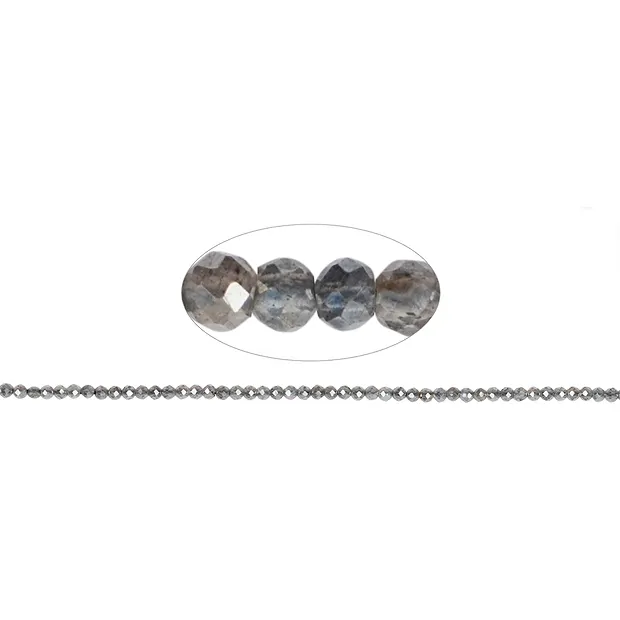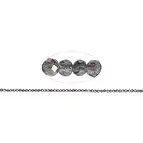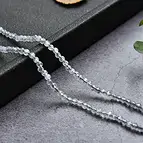String Beads, Labradorite (vaporized), faceted, 02mm
| Product number | 141030104023 |
| Sign in to see prices | Loyalty discount available! Find out more here! |
The faceted 2mm beads of labradorite are threaded into a strand 40cm long. A coating was applied to the stones using a special process.
The process for surface finishing with the finest metal deposits comes from technology and is called CVD (Chemical Vapor Deposition). In this process, the strands are
in vapor containing the coating materials. These materials are then deposited on the surface of the stones to form a finely distributed layer. The exact composition of the surface coating is kept a trade secret by the manufacturers, as in some cases a carrier layer is applied first and then a colored layer in several steps. Various metals and metal compounds are used.
The coating with which the strands are covered is protected against light mechanical stress, but can generally be removed by polishing or partially in an ultrasonic bath. The coating serves to visually change and enhance the stone material.
The mineral was given its name "labradorite" in 1832 due to its first localities on the Labrador Peninsula. Occasional spellings such as labardorite, labradoride, labradoriet, labradorite, labratorite or lapradorite are therefore incorrect.
GPSR
| manufacturer | Marco Schreier Mineralienhandlung GmbH, Im Osterholz 1, 71636 Ludwigsburg, Germany, www.marcoschreier.com Contact |
|---|
Customers also bought
Design your own gemstone jewelry: String Beads, Labradorite (vaporized), faceted, 02mm

Hello! My name is Marco Schreier and I am the founder of the Mineralienhandlung GmbH of the same name. Creativity and stones have been a topic for me since I was a child, and they first shaped my free time and then my entire professional life.
As a child, this began playfully with collecting and crafting with stones I had found myself and with the first minerals that my grandfather brought me from the Alps. Later, a fascination for processing, sawing, grinding, designing and artistic work with gemstones emerged. With our Chili Creative ® brand, we managed to build up a range developed by experts from our wholesale business and our production sites in Asia.
Today, numerous professional jewelry designers, goldsmiths, jewelry makers, jewelers and creative people from the online world such as Etsy and Pinterest providers use the components of Chili Creative® in their projects. With our tools, stone components, bead strands, pearls and silver parts as well as high-quality stringing materials, you can create creative jewelry projects that are highly profitable for resale.

















